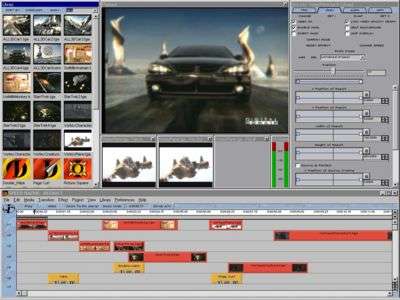Building a Digital Video Capture System - Part I
Now For The Good News
So compressing video is tough and fraught with problems. There is some good news however. Since most of the current video compression algorithms were invented back in the days of 486s and P-90s most companies that produced video capture and compression products gave up on the idea of using the CPU to perform all the necessary calculations. For the most part this still holds true today. For example, even a 400 MHz CPU has to devote almost 80% of its processing power to decode a DVD MPEG-2 stream using a software CODEC (and remember, encoding is much tougher than decoding). Granted, a lot of this has to do with getting around the CSS copy protection schemes but it's still a lot of work. Yes, there are some solutions that are mostly software based but they are usually not even close to real-time. Some specialized effects that require software rendering can take 4 to 10 minutes of processing for every minute of video or more.
So, since using the CPU was out they relied on custom silicon to do the tough stuff and pretty much left the CPU alone. For someone building a digital video capture system today this means that even a top of the line, $30,000 encoder will work fine on an old 300 MHz CPU.
The other good news is that since digital video has been picking up momentum over the past five years a lot of the specialized hardware needed has been falling in price. When the first MPEG-2 capture boards were released they cost about $60,000. Today, you can buy a decent MPEG-2 board for about $400.
Time Is Money
So, if you can buy an MPEG-2 capture board for about $400 then how can companies charge $1,500, $5,000, or up to $30,000 for a capture card? Quality is part of the reason but in digital video processing, speed is the real issue. Post-production houses that charge hundreds of dollars per hour to manipulate your video are willing to pay top dollar in order to do their tweaking in real time. When your client is standing over your shoulder with a stopwatch you don't want to say "okay, I've started the rendering, let's come back in an hour or two". This is good news for the do-it-yourselfer. Up to a certain point you're paying for quality - beyond that point you're paying for speed. If you don't mind waiting for an effect to render then you can save literally thousands of dollars. You'll end up with the same quality but it won't cost you as much as a new car.
Video Toaster on NT - Image courtesy of Newtek
The trick is finding that line and not stepping over (although, you might want to get close enough so that if you discover you really enjoy this stuff you'll be able to take the next steps without having to buy all new gear). Another thing to consider when shopping around for digital video boards is the age-old computer adage "garbage in, garbage out." You might be able to get along now with a $100 capture card that is limited to a resolution of 320 x 240 at 15 fps (frames per second) but you'll never be able to make that video any bigger or better.
Get Tom's Hardware's best news and in-depth reviews, straight to your inbox.
